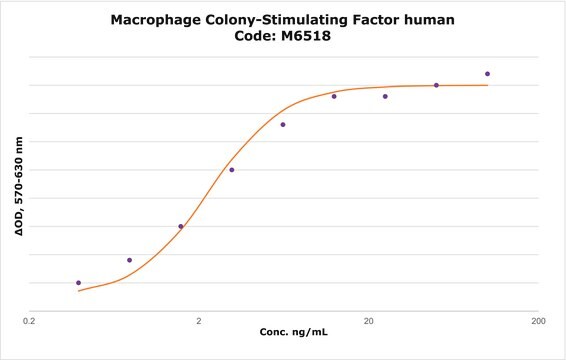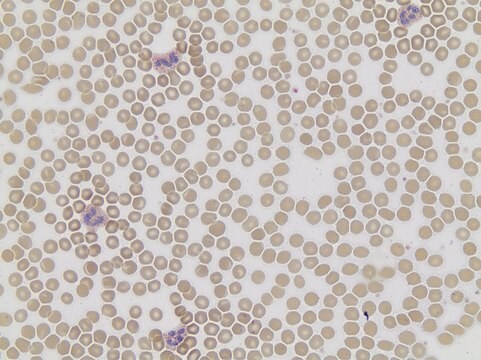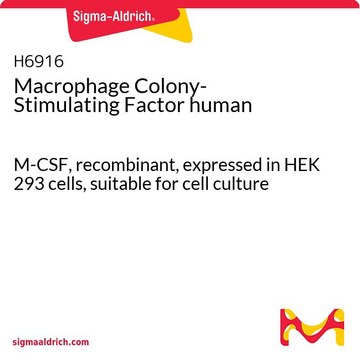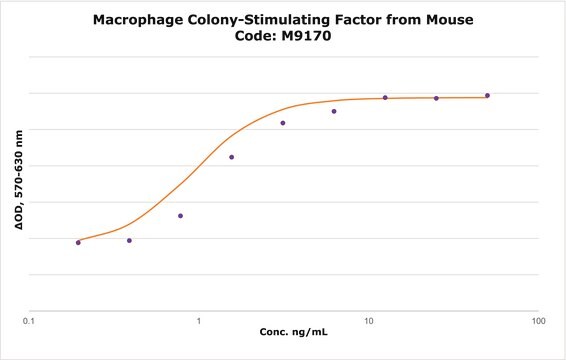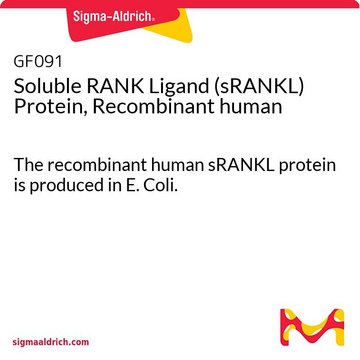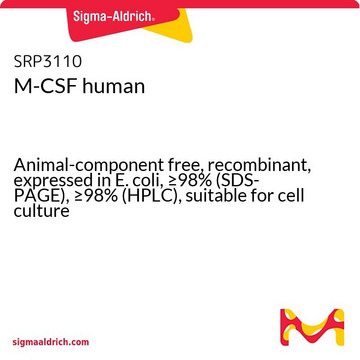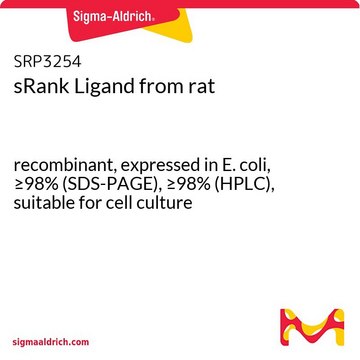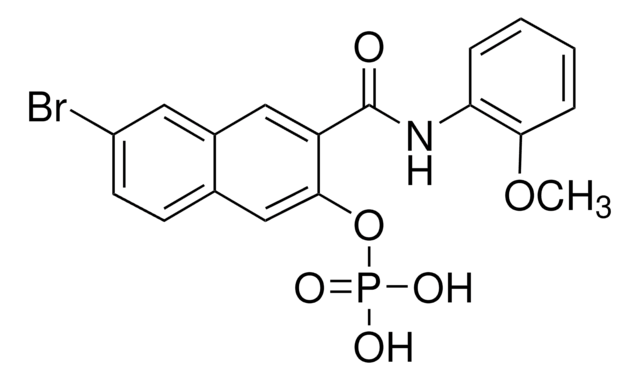R0525
RANK Ligand from mouse
≥98% (SDS-PAGE), recombinant, expressed in E. coli, lyophilized powder, suitable for cell culture
Sinonimo/i:
Osteoclast differentiation factor (ODF), Osteoprotegerin ligand (OPGL), Receptor activator of NF-κB Ligand (RANKL), TNF-related activation−induced cytokines (TRANCE)
About This Item
Prodotti consigliati
Origine biologica
mouse
Livello qualitativo
Ricombinante
expressed in E. coli
Saggio
≥98% (SDS-PAGE)
Stato
lyophilized powder
Potenza
10.0-25.0 ng/mL ED50
Confezionamento
pkg of 10 μg
Condizioni di stoccaggio
avoid repeated freeze/thaw cycles
tecniche
cell culture | mammalian: suitable
Impurezze
<0.1 ng/mg
<1 EU/μg
Colore
white
N° accesso UniProt
Temperatura di conservazione
−20°C
Informazioni sul gene
mouse ... Tnfsf11(21943)
Descrizione generale
Applicazioni
Azioni biochim/fisiol
Stato fisico
Risultati analitici
Codice della classe di stoccaggio
11 - Combustible Solids
Classe di pericolosità dell'acqua (WGK)
WGK 2
Punto d’infiammabilità (°F)
Not applicable
Punto d’infiammabilità (°C)
Not applicable
Dispositivi di protezione individuale
Eyeshields, Gloves, type N95 (US)
Scegli una delle versioni più recenti:
Possiedi già questo prodotto?
I documenti relativi ai prodotti acquistati recentemente sono disponibili nell’Archivio dei documenti.
I clienti hanno visto anche
Il team dei nostri ricercatori vanta grande esperienza in tutte le aree della ricerca quali Life Science, scienza dei materiali, sintesi chimica, cromatografia, discipline analitiche, ecc..
Contatta l'Assistenza Tecnica.

